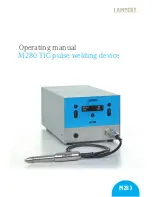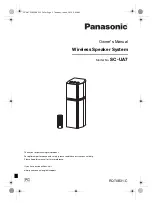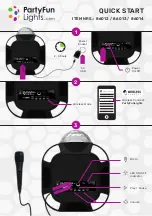
13
The Position of the PCB inside the PIR Detector can be set to 5 different positions to adjust the range
of the detection pattern created by the PIR Detector. Setting the PCB in position 3 will reduce the
range to approximately 9m, with position 1 providing a range of approximately 6m. The recommended
position setting for the PCB is in position 5.
When considering and deciding upon the mounting position for the PIR Detector the following points
should be considered to ensure trouble free operation:
1. Do not locate the PIR Detector facing a window or where it is exposed to or facing direct sunlight.
PIR Detectors are not suitable for use in conservatories.
. Do not locate the PIR Detector where it is exposed to ventilators.
3. Do not locate the Detector directly above a heat source, (e.g. fire, radiator, boiler, etc).
4. Where possible, mount the PIR Detector in the corner of the room so that the logical path of an
intruder would cut across the fan detection pattern. PIR Detectors respond more effectively to
movement across the device than to movement directly towards it.
5. Do not locate the PIR Detector in a position where it is subject to excessive vibration.
6. Ensure that the position selected for the PIR Detector is within effective range of the Control
Panel. It is recommended that prior to installation the Detector is set and tested with the
Control Panel in Walk Test mode to ensure that they are within effective range.
Note:
When the system is Armed, pets should not be allowed into an area protected by a PIR
Detector as their movement would trigger the PIR Detector and trigger an alarm.
Note:
DO NOT fix the PIR Detector to metalwork or locate the unit within 1m of metalwork (i.e.
radiators, water pipes, etc) as this could affect the radio range of the Device.
Installing and configuring the PIR Movement Detectors
Ensure that the Control Panel is in Test mode.
1. Undo and remove the fixing screw from the bottom edge of the PIR Detector. Carefully pull
the bottom edge of the Detector away from the rear cover and then slide down to release the top
clips.
. Carefully drill out the required mounting holes in the
rear cover using a 3mm drill according to whether the
unit is being mounted in a corner or against a flat wall.
3. Using the rear cover as a template, mark the positions
of the fixing holes on the wall.
4. Fix the rear cover to the wall using the two 18mm No.
4 screws and 5mm wall plugs, (a 5mm hole will be
required for the wall plugs). Do not over- tighten the
fixing screws as this may distort or damage the cover.
Mounting Hole
Positions
Rear Cover
Fixing Screw
Содержание LHC100SK
Страница 42: ...42 Notes...














































